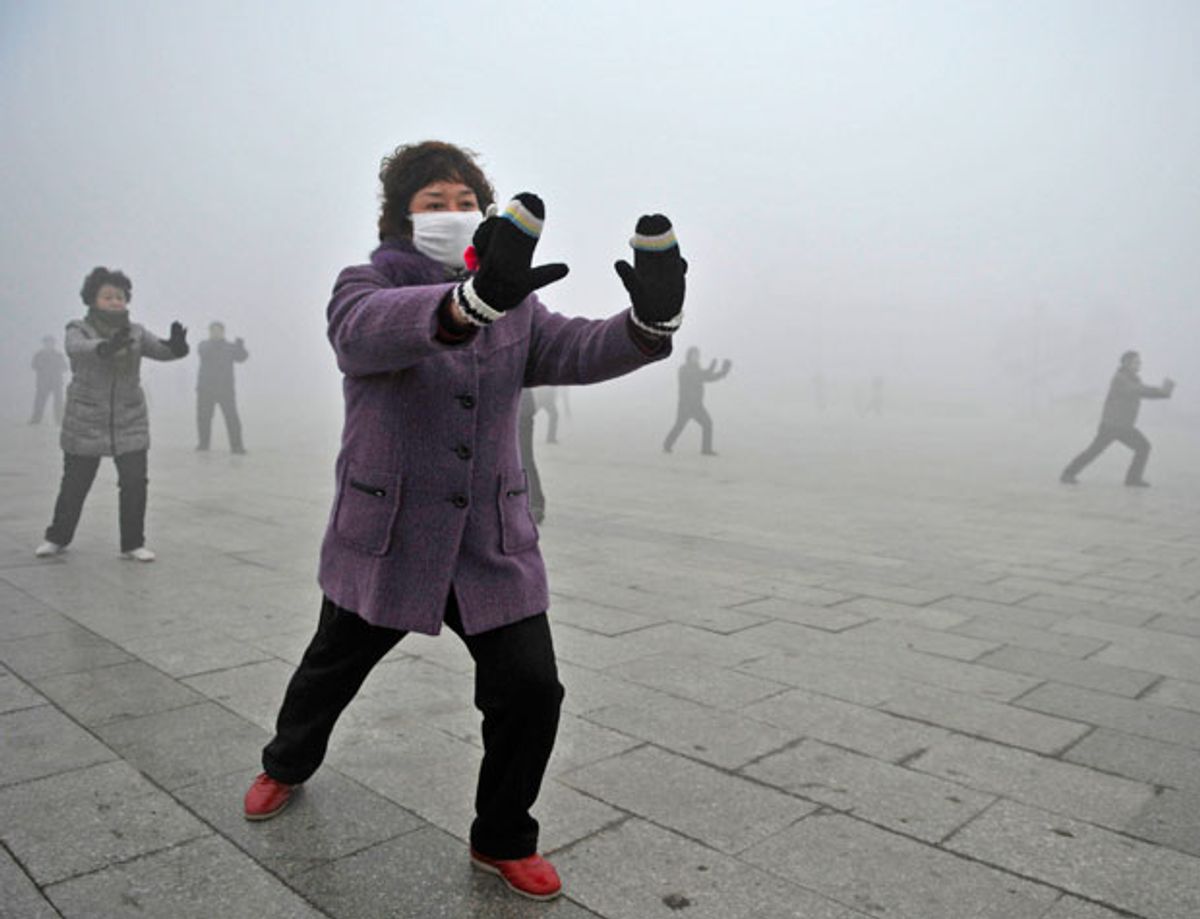At the beginning of this week, China launched a pilot greenhouse gas cap-and-trade emissions trading program in Shenzhen, the high-tech boom city near Hong Kong, with the intention of soon expanding the experiment to four other major cities and two regions. The initial trial applies to 635 companies in the Shenzhen Special Economic Zone, which collectively emitted greenhouse gases equivalent to 31 million metric tons of carbon dioxide in 2010. For the totality of the three-year trial, their emissions will be capped at 100 million metric tons of carbon, implying a significant reduction from what they otherwise would be, given expected economic growth.
China's strategic objective in the seven-element experiment is to move the country in the direction of sharply reducing the ratio of emissions to growth. At the 2009 Copenhagen climate conference it promised to cut that ratio 45 percent from 2005 levels by 2020.
The 635 companies subject to the Shenzhen cap account for about a quarter of the city's GDP and two fifths of its CO2 emissions. Though at first glance it may seem ludicrous to be capping emissions at levels higher than they are today, this is widely accepted, albeit with considerable distaste, as the price that must be paid for winning industrial support for trading schemes. And though the biggest and most notable carbon trading scheme, Europe's Emissions Trading System (ETS), has been crippled almost from the start by excessively generous permits, smaller-scale and much less splashy carbon trading experiments have sometimes been astonishingly successful, notably the U.S. Northeast's.
The fact that China has promised to cut emissions relative to economic growth does not guarantee it will follow through and succeed, needless to say. But the choice of Shenzhen for its first trading system sends a powerful message: Created out of whole cloth in the late 1980s by father of China's economic miracle, Deng Xiao Ping, Shenzhen is itself virtually synonymous with success.
The much larger and less symbolic reason for taking China's experiment seriously, however, is the country's urgent need to reduce air pollution, which largely arises from the same sources that have sent its greenhouse gas emissions through the ceiling. The state of the air in China's major cities and industrial zones already represents a national health emergency and could easily flash into a full blown political crisis. Credible estimates suggest that more than a million Chinese are dying annually from exposure to air pollution. For the sake of protecting their precious newborn children, the country's best and brightest talk seriously of leaving China for points healthier abroad. A prestigious international school in Beijing has spent five million dollars to create an air-filtered gymnasium in which its pupils can work out on days deemed too dangerous for outside play by monitors safely ensconced in the U.S embassy.
In the end it may be true, as cynics suggest, that the Shenzhen trial is too limited in scope and the permits are too generous for there to be any real difference. But it may also turn out to be the case that here again the Chinese are doing what they have done so often before, copying best practices abroad and doing that so well that a real leap forward is achieved.



